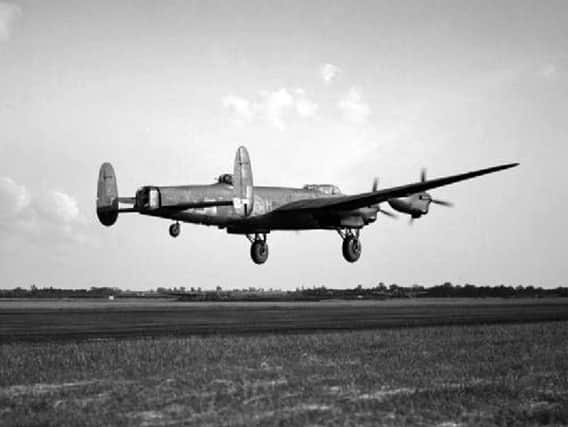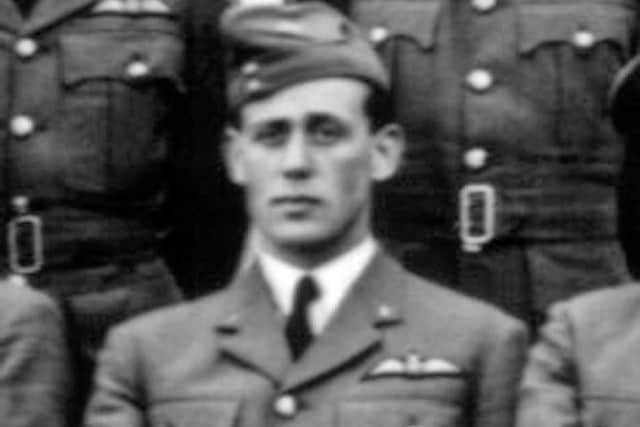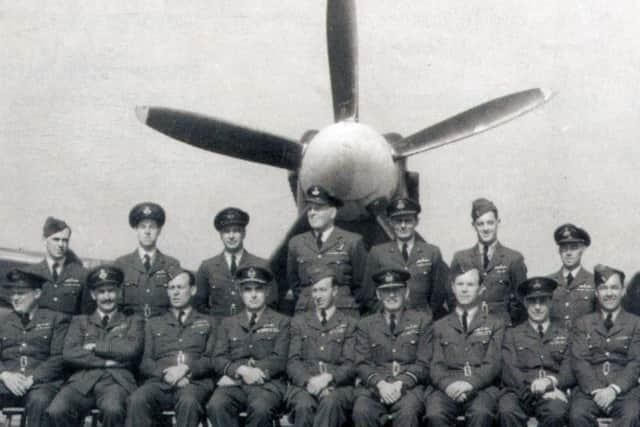James Bazin '“ fighter and bomber pilot hero


Educated in England, he studied engineering and obtained employment in Newcastle-upon-Tyne where he joined the Auxiliary Air Force. He flew Westland Wapitis, Hawker Demons and Gloster Gladiators prior to the outbreak of war.
As a Gloster Gladiator pilot, Bazin was posted with No 607 (County of Durham) Squadron to Merville, France, in November 1939, where during April 1940, the squadron was re-equipped with Hawker Hurricanes, Bazin managing to achieve 35 hours flying time on type before the German Blitzkrieg commenced on 10 May 1940.
Advertisement
Hide AdAdvertisement
Hide AdDuring the Battle of France he was credited with thirds of a kill on two occasions but had to make a forced landing on May 16 after his Hurricane had been damaged. He made his way back to Merville and was flown back to Hendon, London.


During the Battle of Britain, No 607 Squadron was moved to RAF Tangmere on September 8 1940 and a week later Bazin, now a flight commander, claimed a Do17 bomber destroyed. Two days later, he was leading two sections of his squadron in company with No 213 Squadron when Bf 109s of I/JG27 attacked and No 607 was lucky to lose only two Hurricanes.
On September 30, he shot down a Junkers Ju 88 but on October 5 he was shot down by Messerschmitt Bf 109s over Swanage, Dorset. Fortunately, he was able to force-land his Hurricane near Hurn, Bournemouth.
Later he recalled his feelings on this day: “You didn’t really have time to panic. You just think - how the hell can I get out of this!” Three weeks later he was awarded the DFC.
Advertisement
Hide AdAdvertisement
Hide AdIn December 1940, Bazin was posted first to Catterick and then, in early 1941, to Inverness as a Controller in the Operations Room of No 14 Group. It wasn’t until November 1943 before he returned to operational flying – this time to fly bombers.


After training on Avro Lancasters, Wing Commander Bazin was posted to No 49 Squadron at Fiskerton as a flight commander. His early sorties were against Hitler’s super-gun revenge weapon at Morsalines, northern France.
After only seven operations he left No 49 to assume command of No 9 Squadron based at Bardney, Lincolnshire. His first operation in command of No 9 was on August 4 1944, when he led 13 aircraft on an attack on a bridge at Etaples, northern France.
The following month, No 9 Squadron with No 617 Squadron (the Dambusters) was tasked with attacking the German battleship Tirpitz at its moorings in Alten Fjord Norway. Bazin led the squadron’s Lancasters armed with the Barnes Wallis designed ‘Tallboy’ bombs in two attacks on the battleship, the first from Yagodnik near Archangel in the USSR.
Advertisement
Hide AdAdvertisement
Hide AdBoth attacks failed due to poor weather. On the third attempt and successful attack, Bazin could not take part due to his aircraft being unserviceable. He left No 9 Squadron on May 25 1945.
After leaving the RAF in 1945, he was awarded the DSO on September 21 1945 and re-joined No 607 Squadron Royal Auxiliary Air Force as a flight commander, reliving the pre-war routine of part-time training and annual summer camps.
Wing Commander James Bazin DSO DFC commanded the squadron for two years between 1949 and 1951 and died on January 9 1985. His ashes are interred in Tangmere’s St Andrew’s churchyard.
This article is the 55th in a series of monthly articles on the people of RAF Tangmere. More information on the museum can be found at www.tangmere-museum.org.uk